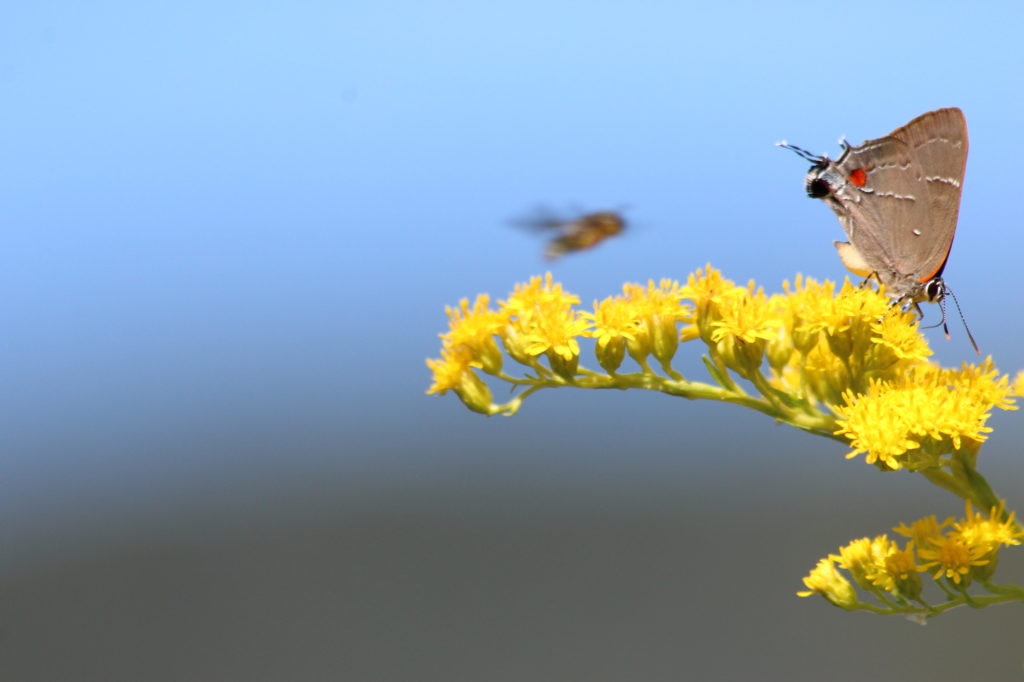
What’s in Bloom | Goldenrod
September 18, 2020
Goldenrods (Solidago spp.) are perennial herbs in the aster family (Asteraceae) with golden blooms that mark the transition from late summer to autumn here in Virginia. According to The Flora of Virginia (our favorite resource when surveying plants) there are over 40 different species of Solidago found in Virginia.
With such a large variety of goldenrod species, you can imagine this is a fun one for us to key out in the field. Some look quite similar and are best identified when in full bloom and others have very distinct characteristics that make them easier to identify from other Solidago species. (For instance, did you know there is one called Silverrod, Solidago bicolor? It’s best known for — you guessed it — its silvery white blooms.) We have included photos of a few different species below (including S. bicolor), but for the purpose of this description we will focus on goldenrods in general.
Solidago spp. are perennials with alternate, entire or serrate leaves (sometimes shallowly toothed). Their flowers are generally small with yellow ray and disk florets (rarely white).
They produce ample pollen that supports a wide number of pollinators. Though sometimes blamed as a culprit in late-season allergies, goldenrod is not wind pollinated. The true culprit is often ragweed (Ambrosia spp.), which blooms at the same time and has abundant wind-carried pollen, but often goes unnoticed as its not as showy as goldenrod.
Benefits to Biodiversity | Goldenrods are superb and important plants to support hundreds of pollinators (bees, wasps, beetles, butterflies are all attracted to it) and other wildlife. According to Doug Tallamy’s research, Solidago species are caterpillar hosts of 115 species of Lepidoptera alone. They provide pollen in late summer and autumn when many other plants are past blooming. This extends the resource availability for pollinators later in the season making it a great choice to add to pollinator gardens and landscapes along with earlier flowering plants. The tough stalks provide great structure in the winter months as well to provide cover and protection to birds and mammals. Many insects will lay their eggs in the stems to overwinter (look for the galls on the stalks).
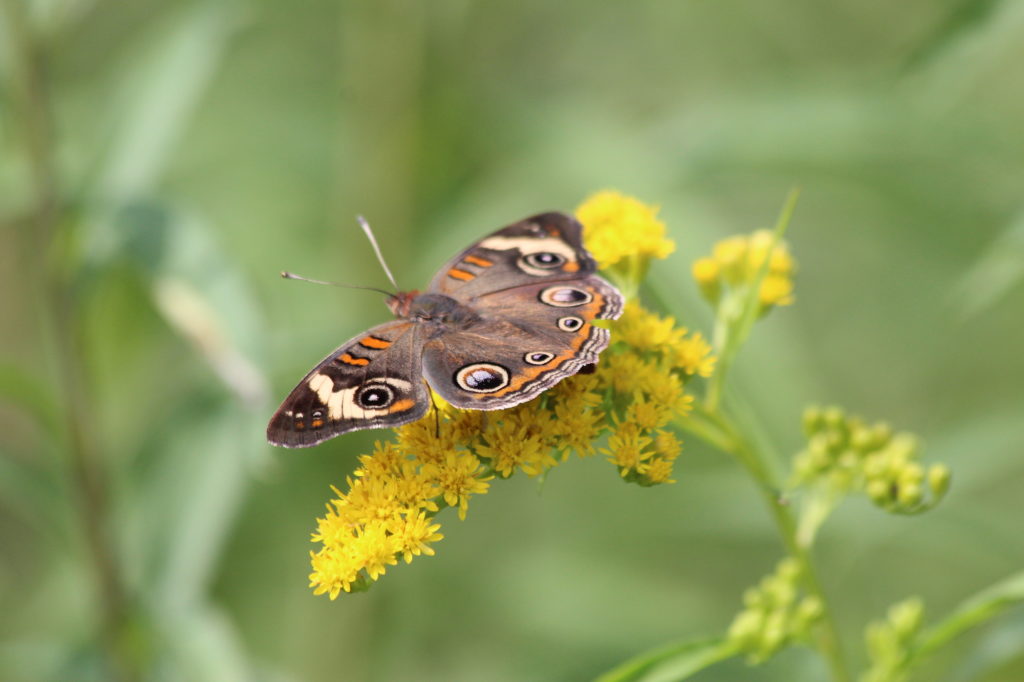
Common buckeye butterfly (Junonia coenia) on S. gigantea 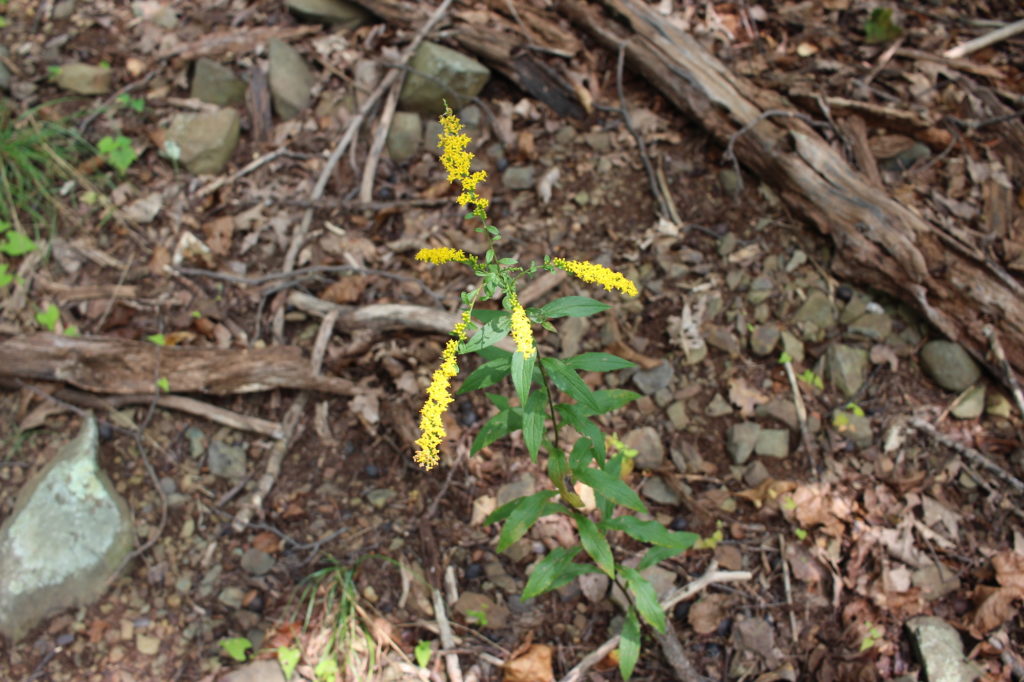
Elm-leaf goldenrod (S. ulmifolia), often found in rocky forests, woodlands and barrens 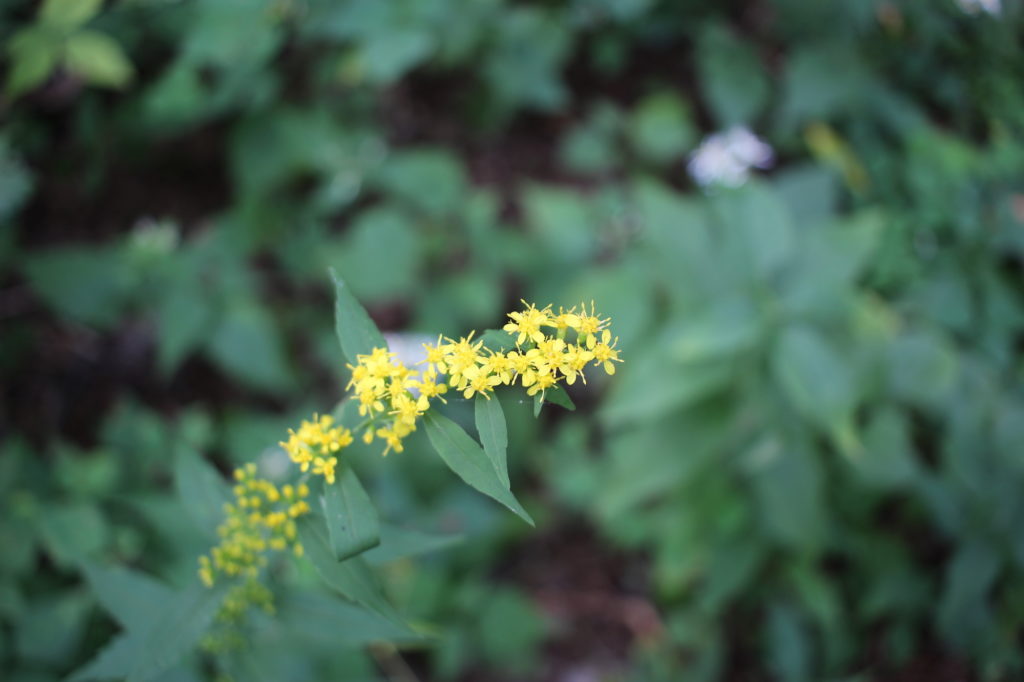
Blue-stemmed goldenrod (S. caesia) found in dry upland forests, woodlands and clearings 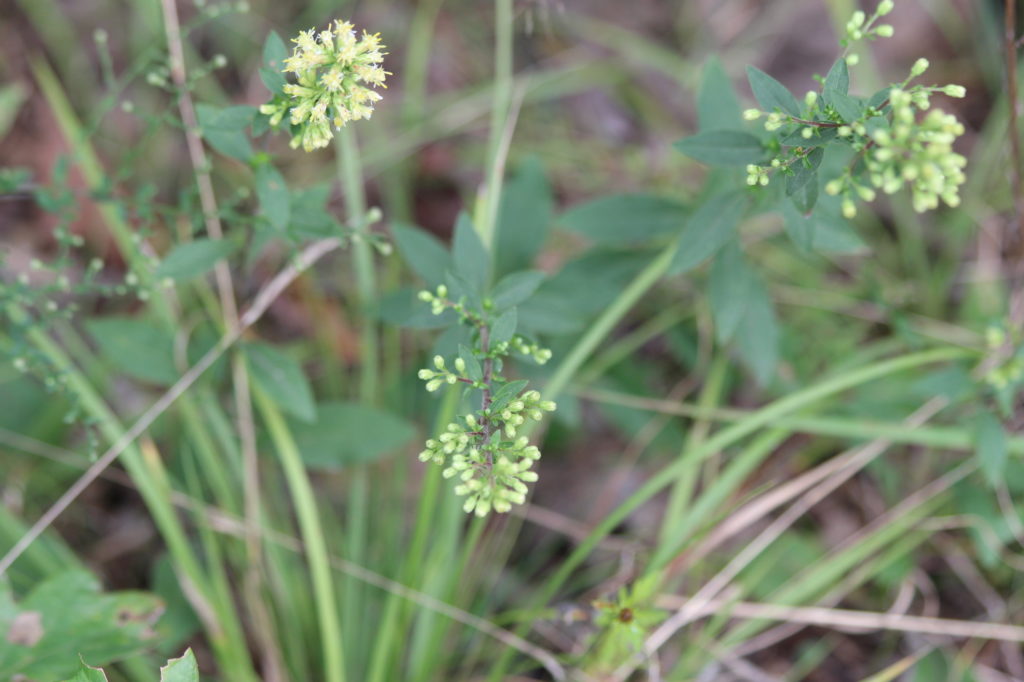
Silverrod (S. bicolor) 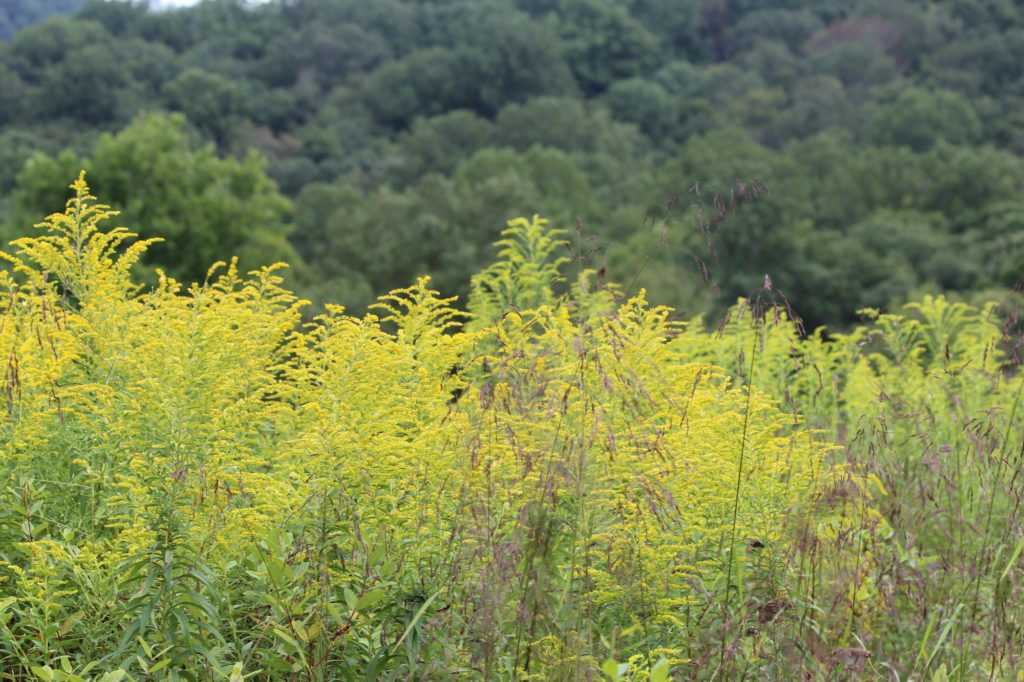
Tall goldenrod (S. altissima) is common in Virginia grasslands. Spreads through rhizomes forming large colonies.
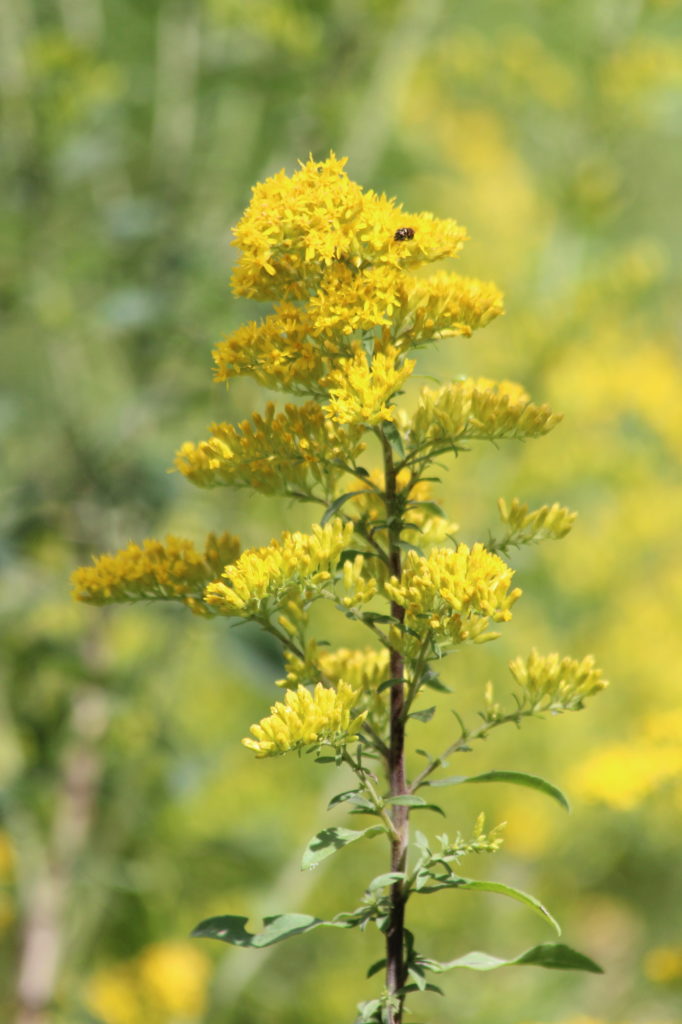
Gray goldenrod (S. nemoralis) 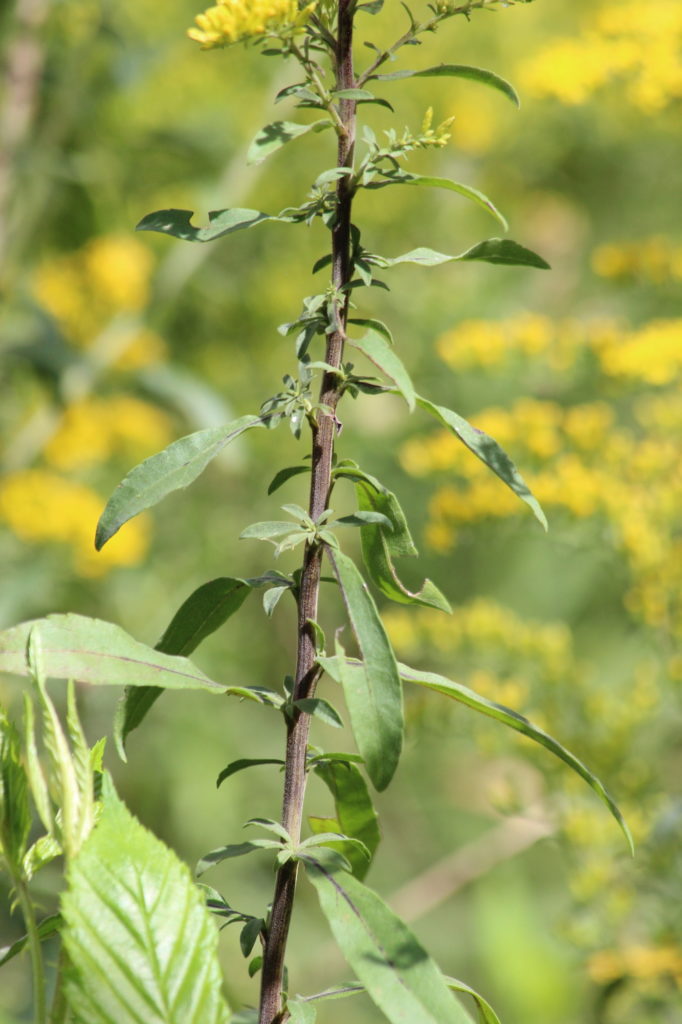
S. nemoralis with grayish hairs on stem 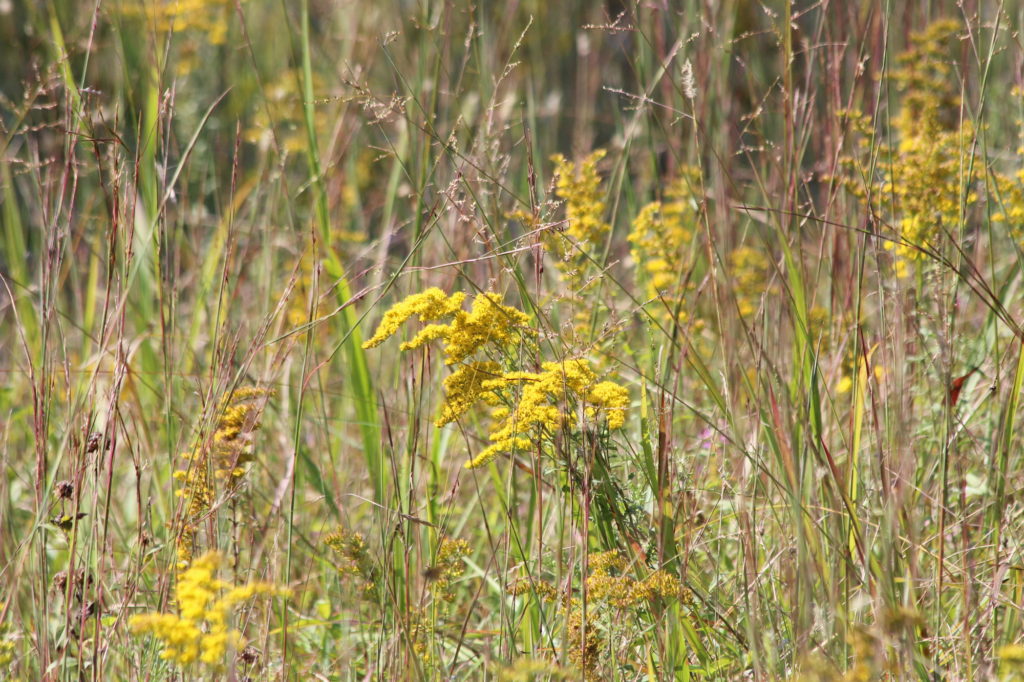
S. nemoralis is generally found in drier soils. Here it is growing amongst little bluestem (Schizachyrium scoparium) and beaked panic grass (Coleataenia anceps) in an old grassland.